 If you suffer from back pain and are more than 10 pounds above your ideal weight, losing that weight may significantly reduce the amount of pain you are experiencing. According to Dr. Andre Panagos, co-director of The Spine Center at New York’s Presbyterian Hospital, “Although research on weight loss and back pain is minimal, in my clinic, every single person who loses a significant amount of weight finds their pain to be significantly improved.”
0 Comments
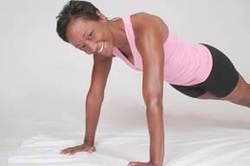 If you're not familiar with body weight exercising, you should be. No gym membership? No equipment? No time to travel to a place that has all the equipment? No problem! With a body weight program, you don't need equipment or time to travel. All you need is enough floor space to do some simple exercises, using your body weight to provide resistance for your muscles. 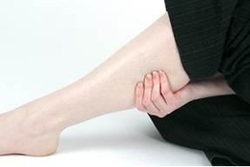 Have you ever had a good night’s sleep interrupted by a stabbing pain through the calf of your leg? Have you ever been gripped by agonizing spasms in your lower back that threatened to knock you down? When a muscle tightens without you “telling it to” and just won't relax despite your best efforts, you are suffering a muscle cramp. Most muscles in your body are what are called "voluntary" muscles. These can usually be contracted and relaxed in order to control your arms, legs, fingers, neck, posture and more. Even the simplest movements are a highly synchronized sequence of muscle contractions and relaxations.  Although you may have heard the term before, you may not know exactly what a “shin splint” is. It's a common term for painful inflammation at the front of the tibia caused by strenuous activity. Medical professionals refer to it as medial tibial stress syndrome (MTSS). The following exercises will not only help to prevent shin splints or MTSS, but the first two exercises can also help relieve some of the agony for those who are already suffering from the syndrome. If you already have shin splints, use care and restraint in performing these exercises.  When someone decides to visit the doctor about musculoskeletal pain, back pain is the most common complaint. Sometimes back pain is the result of very specific trauma—a car accident or a slip-and-fall. Other times, however, its causes are much less obvious—cumulative years of poor posture, inactivity or bad nutrition, for example. The rest of this article looks at the role exercise can play in preventing and treating back pain.  One of the great challenges faced by many of us who live in four-season climates is how to stay active and get enough healthy exercise once the temperatures start dropping. When it's cold and snowy outside, few of us have the "Just Do It" mentality of Olympic marathoner Joan Benoit, as demonstrated in this famous Nike commercial: http://www.youtube.com/watch?v=CqXPw_6eYZw 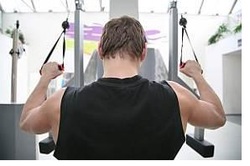 Of all the musculoskeletal complaints for which people will go to a doctor, back pain is the most prevalent. The more sedentary we are (think about our desk jobs and all the hours we spend in front of a TV or computer screen), the weaker all of the structures that support our frame—muscles, tendons and ligaments—become. This in turn makes back injuries more likely. However, it doesn’t have to be this way. By strengthening your core, which includes not only your back, but your abdomen, buttocks and hips, you are more likely to prevent injury. By practicing a few of these back strengthening exercises on a regular basis, you can help keep your back pain-free.  Pain and stiffness can significantly reduce your neck’s range of motion. Although a decreased range of motion in your neck may not seem like a major problem, it can actually contribute to a number of unpleasant conditions, including headache, fatigue, irritability and sleep loss. Like any other part of the body, our neck can become stronger and more flexible through exercise. Following are some useful exercises that can help to increase the range of motion in your neck. 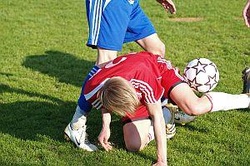 Some aches and pains are normal as we age, but there’s no reason why we should not try to keep them to a minimum. Knee health is important in keeping you mobile as you get older, and experts agree that the best way to keep them in good shape is (ideally) to avoid receiving a knee injury. Even old injuries to the knee that may have happened when you were in your 20s can come back to haunt you in your retirement years. You may not be able to go back in time and avoid the injury, but there are some things you can do to help keep your knees from being prone to injury. Following are the top 5 ways experts recommend to keep your knees younger longer. 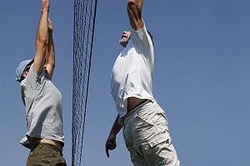 We first begin to learn eye-hand coordination (sometimes also called hand-eye coordination) when we are infants, with the greatest amount of development occurring during childhood. But it is never too late to improve eye-hand coordination skills. It is important to maintain this function as we age, since it is central to so many of our daily tasks, such as driving or chopping vegetables.  Although it may not seem like it, water polo is a very physically demanding sport. Its players are required to spend an hour and fifteen minutes in a pool, during which they cover a distance of as much as three kilometers. There is a good deal of physical contact above and below water. In addition, teammates must shoot and pass the ball without the benefit of contact with the ground to help generate force in the upper body.  The healthy shoulder joint allows us to move our arms a full 270 degrees in range, which no other joint can do. When you consider the shoulder’s range of motion and its complexity, it’s no wonder that this joint is particularly prone to injury. However, there are some steps you can take to help prevent shoulder damage. The anatomy of the shoulder involves not only the ball-and-socket type glenohumeral joint that most people are familiar with (which allows for a wide range of movement), but three other joints as well, all supported by tendons and ligaments. These four joints are composed of the glenohumeral, scapulothoracic, acromioclavicular and sternoclavicular joints. The two clavicular joints are not very mobile, so injuries to these are often the cause of shoulder complaints. But because the glenohumeral and scapulothoracic joints have such a wide range of motion, the supporting tendons and ligaments are more prone to injury. |
AuthorPosted by Dr. Babak Missaghi Archives
August 2017
Categories
All
|


 RSS Feed
RSS Feed
